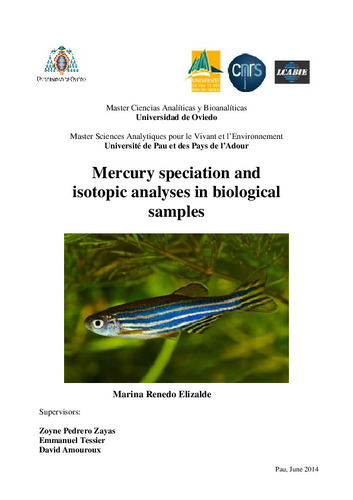Mercury speciation and isotopic analyses in biological samples
Autor(es) y otros:
Director(es):
Palabra(s) clave:
mercury
bioaccumulation
speciation
isotopes
Fecha de publicación:
Serie:
Máster Universitario en Ciencias Analíticas y Bioanalíticas
Descripción física:
Resumen:
Due to its chemical properties, mercury (Hg) can be present in all compartments, transported over long distances and accumulated in the environment, where once methylated, it biomagnifies. These facts associated to the anthropogenic pressure, which have increased concentrations in many systems, make Hg become a ubiquitous contaminant through global atmospheric, oceanic circulation and biological turnover. As a result of its severe toxicity, Hg is considered a global pollutant of major concern for humans and animals. The specific objective of this study is to investigate and compare the fate of methylmercury and inorganic mercury in different organs (brain, liver and muscle) of zebra fish (Dario rerio sp) by Hg speciation and isotopic fractionation analyses.
Due to its chemical properties, mercury (Hg) can be present in all compartments, transported over long distances and accumulated in the environment, where once methylated, it biomagnifies. These facts associated to the anthropogenic pressure, which have increased concentrations in many systems, make Hg become a ubiquitous contaminant through global atmospheric, oceanic circulation and biological turnover. As a result of its severe toxicity, Hg is considered a global pollutant of major concern for humans and animals. The specific objective of this study is to investigate and compare the fate of methylmercury and inorganic mercury in different organs (brain, liver and muscle) of zebra fish (Dario rerio sp) by Hg speciation and isotopic fractionation analyses.
Descripción:
Double diploma Master (Universidad de Oviedo- Université de Pau et des Pays de l'Adour)
Colecciones
- Trabajos Fin de Máster [5287]
Ficheros en el ítem




